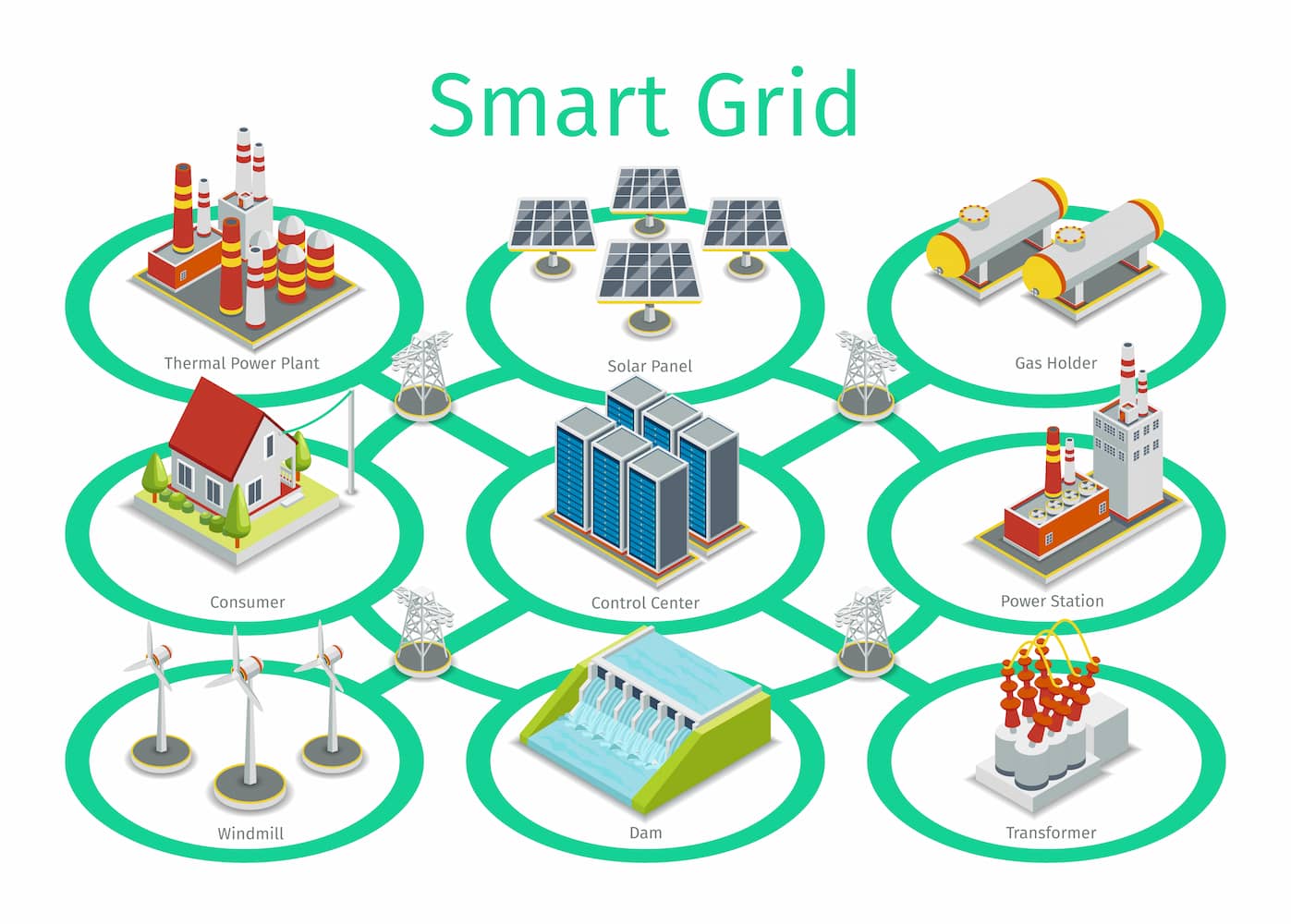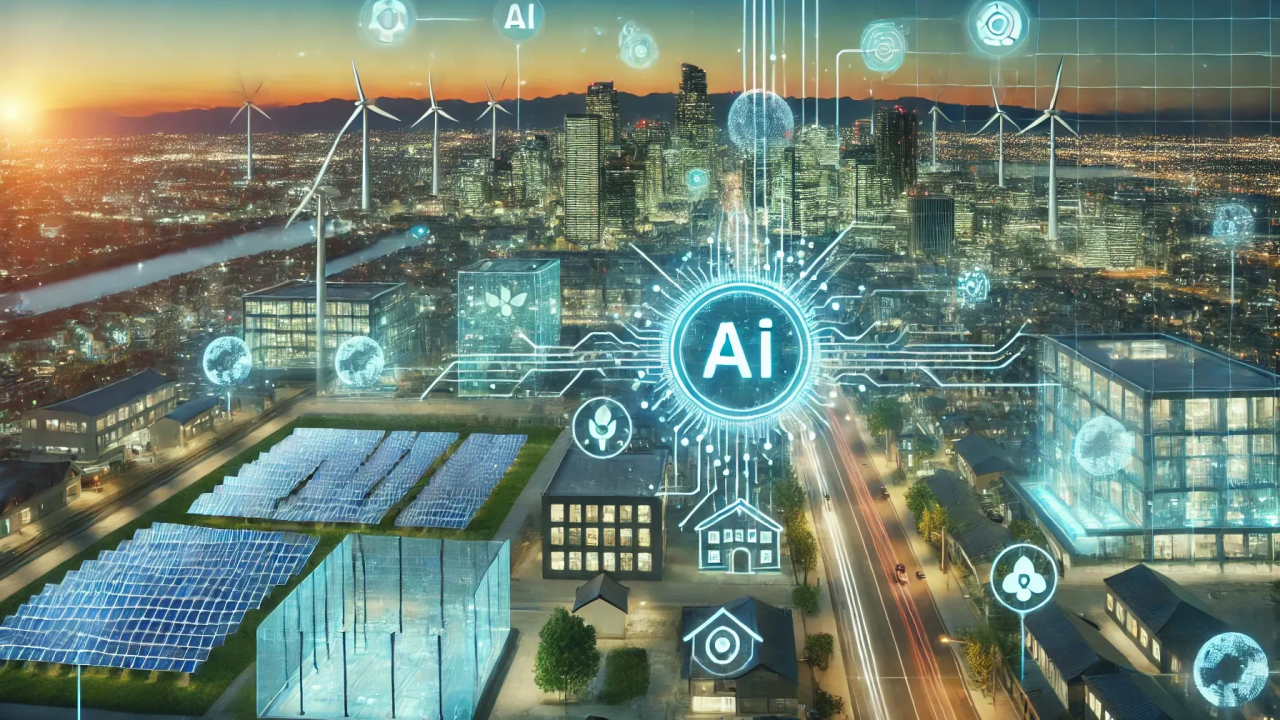What is a Smart Grid?
A smart grid, or smart power grid, is a modern, digitized power distribution system that uses two-way communication to manage the flow of electricity. Unlike traditional, one-way grids, smart electrical grids are built with advanced smart grid technology that allows for real-time information exchange between utilities and consumers. This two-way flow of data enables the grid to be more efficient, reliable, and sustainable.
At its core, a smart grid transforms the static, centralized model of electricity distribution into a dynamic, decentralized network. It’s designed to handle the complexities of the 21st century, including the integration of intermittent renewable energy sources like wind and solar, as well as the increasing demand from electric vehicles and smart home devices.
Why Smart Grids Matter
Electric systems face three pressures: decarbonization, electrification, and digitalization. As heat pumps, EVs, and data centers raise demand, and as solar and wind add variability, utilities must keep the lights on efficiently and affordably. A smart power grid makes that possible by connecting grid components—sensors, meters, substations, distributed energy resources (DERs), and controls—over secure communications, then using software to coordinate grid operations in real time.
Key outcomes:
- Higher resilience against faults and extreme weather
- Lower system losses and faster fault localization
- Seamless accommodation of rooftop PV, batteries, and EV charging
- Transparent billing and demand response through smart meters
- Reduced operational costs via automation and condition-based maintenance

The Core Components of a Smart Grid
A smart grid is not a single piece of technology but an integrated network of advanced smart grid components. These components work together to create a cohesive and intelligent system.
- Smart Meters: Devices like the National Grid smart meter are a cornerstone of the smart grid. They provide real-time data on electricity consumption to both the utility and the consumer, allowing for better management and more accurate billing.
- Sensors and Communication Networks: A vast network of sensors placed throughout the distribution grid monitors everything from voltage levels and power quality to potential faults. These sensors rely on high-speed communication networks to transmit data back to a central control system.
- Automated Control Systems: These systems use the data from sensors to automatically respond to changes in the grid. For instance, they can reroute power to bypass a faulty section, minimizing the impact of an outage and improving grid stability.
- Integrated Renewable Energy Sources: Smart grids are designed to seamlessly integrate power from distributed sources, such as rooftop solar panels and community wind farms. This is a critical feature for reducing reliance on fossil fuels.
The Role of AI, 5G, and Robotics in Smart Grids
The true power of smart grids is unlocked by the convergence of cutting-edge technologies. Artificial Intelligence (AI), 5G communication, and robotics are not just add-ons; they are the engines driving the next generation of smart grid solutions.
Artificial Intelligence (AI): The Brain of the Grid
AI is the intelligence that makes the smart grid "smart." It processes the massive amounts of data generated by the grid to make predictive and real-time decisions.
- Predictive Maintenance: AI algorithms analyze historical and real-time data from smart grid components to predict when equipment might fail. This allows utilities to perform proactive maintenance, preventing outages before they occur and significantly enhancing grid stability.
- Load Forecasting and Optimization: AI can accurately forecast electricity consumption patterns based on factors like weather, time of day, and consumer behavior. This helps utilities optimize grid operations, ensuring that the right amount of power is generated and distributed efficiently.
- Distributed Energy Management: As more homes and businesses generate their own power, AI acts as a traffic controller, managing the flow of energy from these distributed renewable energy sources. It balances local supply with demand, turning every prosumer (producer-consumer) into a valuable part of the overall power distribution network.

5G Communication: The Central Nervous System
The massive amount of data exchanged within a smart grid requires a robust and fast communication network. This is where 5G comes in.
- Ultra-Low Latency: 5G’s low latency is crucial for real-time grid operations. It allows for instant communication between sensors and control systems, enabling split-second decisions that are vital for preventing blackouts and ensuring system reliability.
- Massive IoT Connectivity: A smart grid can have billions of connected devices, from smart meters to transformers. 5G’s ability to handle an unprecedented number of connected devices is essential for a fully sensorized and automated distribution grid.
- High-Speed Data Transmission: The sheer volume of data from sensors, smart meters, and other grid devices requires high bandwidth. 5G provides the speed needed to transmit this data quickly and reliably, supporting AI-driven analytics.
Robotics: The Hands and Eyes of the Grid
Robotics introduces a new level of automation and safety to power distribution and maintenance.
- Automated Inspection and Monitoring: Drones and ground robots can autonomously patrol thousands of miles of power lines and inspect substations. Equipped with high-resolution cameras and thermal sensors, they can detect issues like overheating components or damaged lines that might be missed by manual inspections, significantly improving the safety and efficiency of grid operations.
- Hazardous Maintenance: In dangerous or hard-to-reach areas, robots can perform maintenance tasks, such as clearing debris from power lines or repairing equipment in live substations. This reduces the risk to human workers and allows for faster repairs, contributing to grid stability.
- Automated Substation Operations: Robots are increasingly being used to perform routine tasks within substations, such as reading gauges, switching breakers, and monitoring equipment, further enhancing automation within the smart power grid.
Smart Grid Operations in Practice
- Volt/VAR Optimization (VVO). Sensors and controllers maintain optimal voltage profiles along feeders, reducing technical losses and keeping customer voltages within standards.
- Fault Location, Isolation, and Service Restoration (FLISR). When a line faults, automated switches isolate the segment and back-feed healthy sections—often restoring most customers in seconds.
- DER Coordination: DERMS dispatches community batteries during peak demand, absorbs midday solar surpluses, and manages EV charging to avoid transformer overloads in the distribution grid.
- Demand Response: Time-of-use and real-time pricing nudge electricity consumption to cheaper, cleaner hours. Smart thermostats, water heaters, and EV chargers respond automatically.
- Microgrids & Islanding: Critical facilities (hospitals, data centers) island from the main network and run on renewable energy sources plus storage during grid disturbances.
- Power Quality Management: Continuous monitoring spots harmonics and flicker from inverter-rich feeders, triggering filters or control setpoint changes.
Benefits and Measurable Impacts
- Reliability: Reduced SAIDI/SAIFI as automated restoration shortens outages.
- Affordability: Lower losses, deferred capital upgrades, and targeted maintenance keep rates in check.
- Sustainability: Higher penetration of wind, solar, and storage while keeping grid stability within limits.
- Transparency: Interval data from smart meters clarifies electricity distribution performance and empowers consumer decisions.
- Resilience: Faster situational awareness, sectionalizing, and microgrids limit the impact of extreme weather and wildfires.
Conclusion: The Future is Now
The shift from a traditional power distribution system to smart grids is not just an upgrade; it's a fundamental transformation. By integrating advanced smart grid technology with AI, 5G, and robotics, we are building a more resilient, efficient, and sustainable future. These smart grid solutions are critical for managing the complexities of a modern energy landscape and are essential for a future powered by clean, reliable energy.












SHTOU-mining-cable-2.webp)







2Y-high-voltage-power-cable-2.webp)